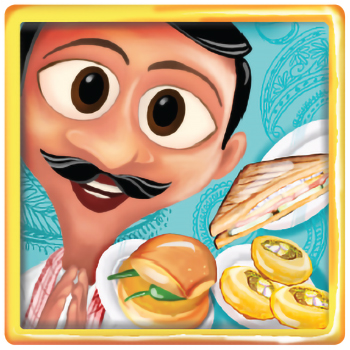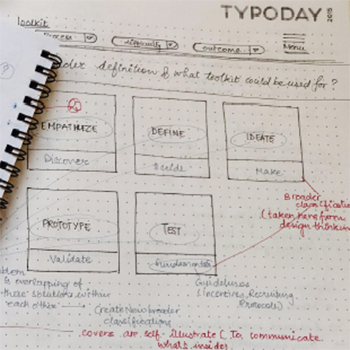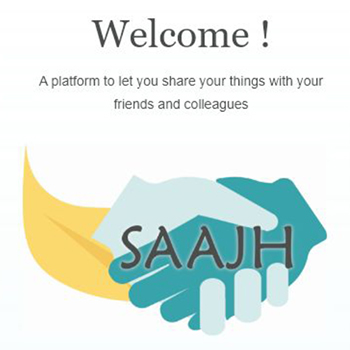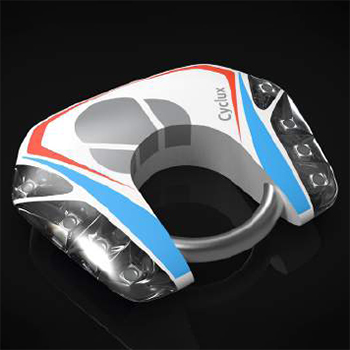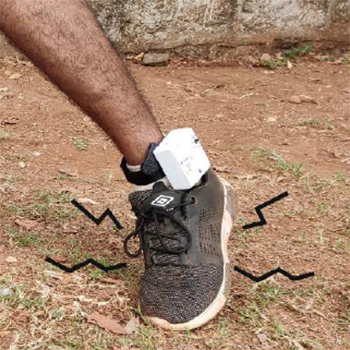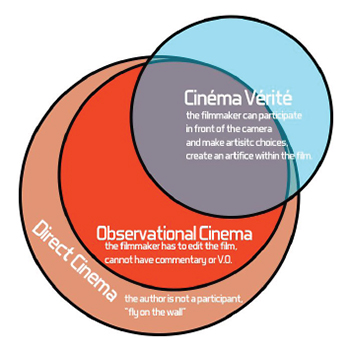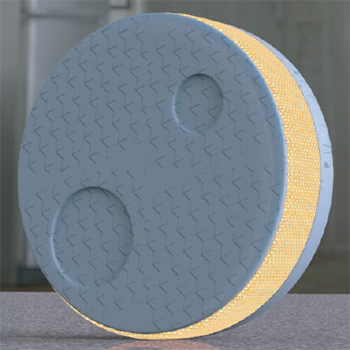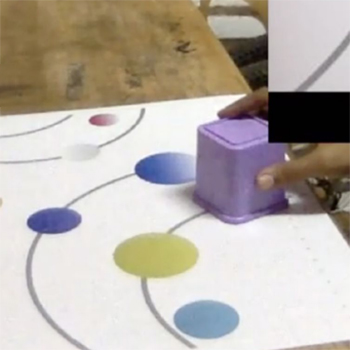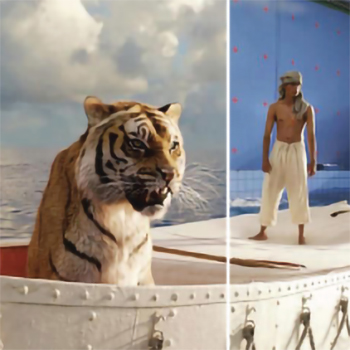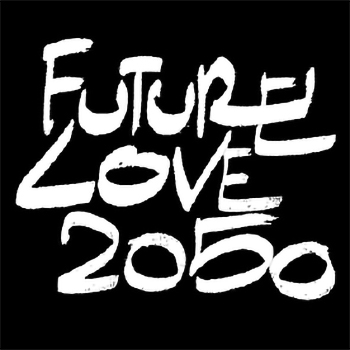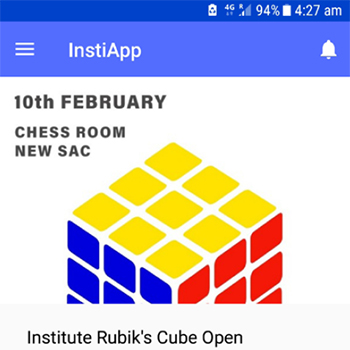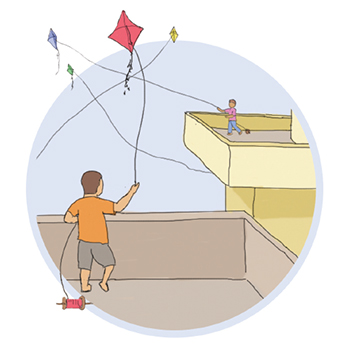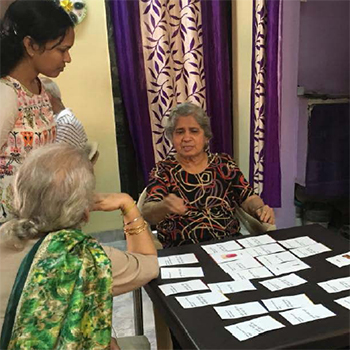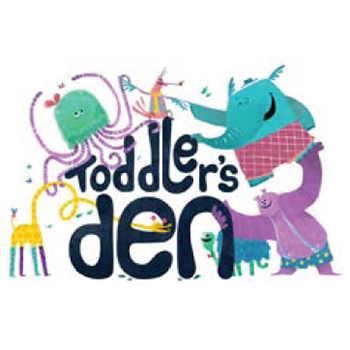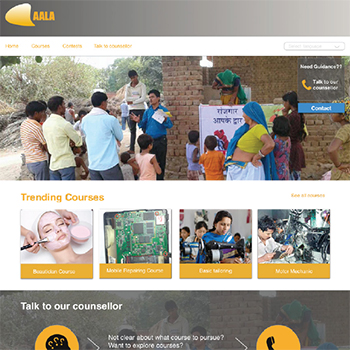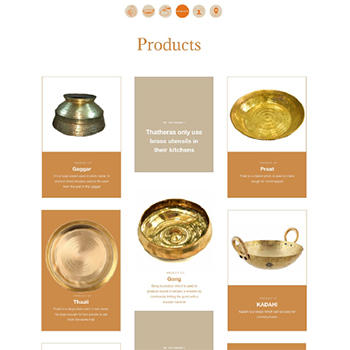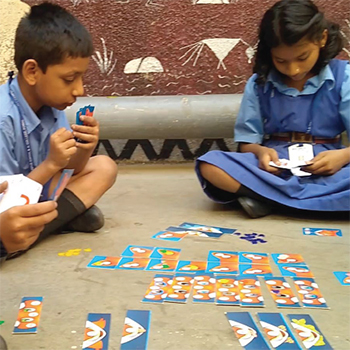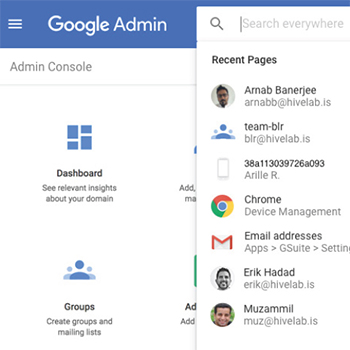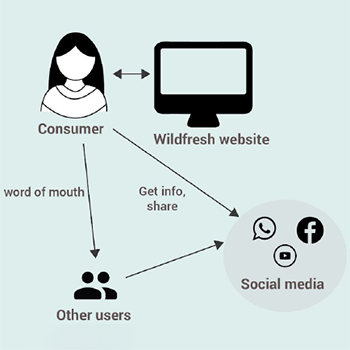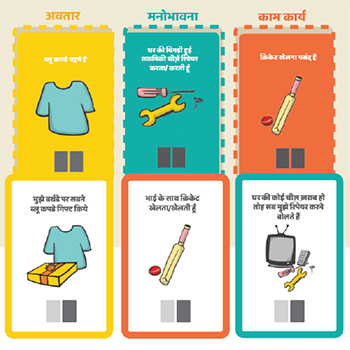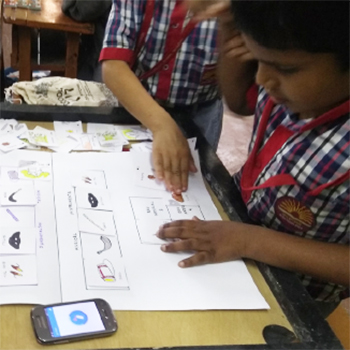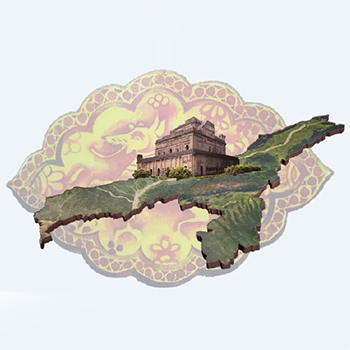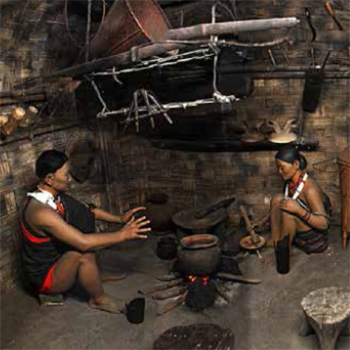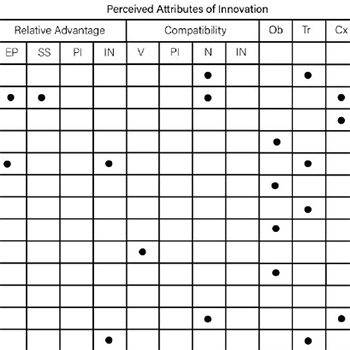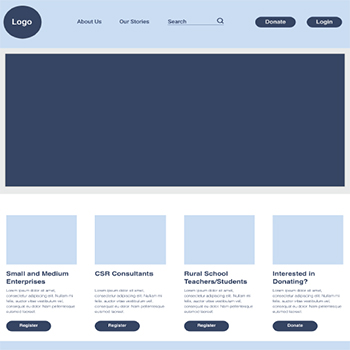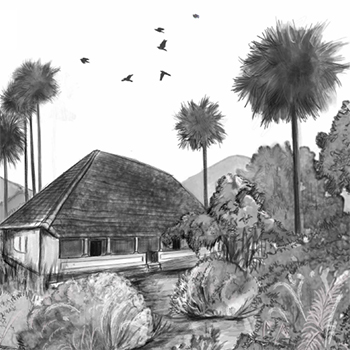Interaction Design
Batch 2017-2019
(44 items)
Interaction DesignBatch 2017-2019
(44 items)
(44 items)
AR/VR in the area of healthcare
by Angela Riang Simon
by Angela Riang Simon
This project was done in Philips Innovation Campus, Bangalore, along with the Philips Design Team led by Abhimanyu Kulkarni, Design Manager-Director. The history of AR/VR begins with the first actual VR head-mounted display created by computer scientist Ivan Sutherland. But the technology stayed dormant until recent years with the development of the Oculus Rift and other pioneers of the modern era of AR/VR. With the HMD becoming more portable and infused with the benefits of mobile technology, new innovative ideas have started to come alive – mostly driven by our ideas of the future in various science fiction novels and literature. Currently the AR/VR industry has expanded enormously, spreading itself over various sectors, to name a few – advertising/marketing, art/design, health/fitness, entertainment, smart wearables, medical devices solutions/services, etc.
Details >>Smartphone based exercise game for finger dexterity - an adjunctive therapy app for stroke patients
by Angela Riang Simon
by Angela Riang Simon
Stroke is a medical condition that can leave a person physically and cognitively impaired. It is possible to regain the lost functionality through repetitive exercises that help in retraining the brain. Post-stroke rehabilitation can extend from months to years, and it demands motivation and a disciplined exercise routine to achieve the recovery goals. Games have been used to transform these repetitive exercises into fun engaging activities during therapy. This project is focused on the use of smartphones for delivering exercise routines in a low-cost and accessible manner. We present the design of an exercise game for finger dexterity that can be played by stroke patients on a smartphone as an adjunct to treatment, alongside visits to the therapist. Apart from converting finger exercises into game controls, the design of the game also helps patients maintain an exercise routine as well as motivates them to take charge of their recovery pace. The primary game mechanic was prototyped and evaluated for its feasibility by an expert therapist. The feedback received was used to develop the game further. The final design has been presented in this report.
Details >>EMG biofeedback device for Brachial Plexus Injury Rehabilitation
by Angela Riang Simon
by Angela Riang Simon
Biofeedback devices are used commonly by physiotherapists for the rehabilitation treatment of a wide range of neuromuscular and musculoskeletal problems. Physiotherapy centres in India purchase imported biofeedback units which come packed with multiple features for electrostimulation, EMG biofeedback, pressure biofeedback, etc. This makes the devices multi-purpose and expensive. The cost of such devices and their complex usability limit their usage to therapy centres and trained therapists. In this design project, we looked into the use of biofeedback for Brachial Plexus Injury (BPI) rehabilitation. Biofeedback is used primarily for muscle re-education after nerve transfer surgery in BPI treatment. Considering the ecosystem of a govt physiotherapy centre that specialises in BPI rehabilitation, we identified the challenges they face in providing the best results to their BPI patients. This design project presents a cost-effective sEMG biofeedback solution that is simple to use and specific to BPI rehabilitation. Eliminating use of dedicated hardware for displaying biofeedback signals and using a smartphone app instead reduces the cost of the system. The solution includes sEMG sensor units along with an accompanying mobile application that can be used by both physiotherapists and BPI patients. Expert evaluation of the design of the system and the mobile app was carried out at the end of the project.
Details >>Identification and Prototyping of tools for design
by Annu
by Annu
The report presents a detailed study and identifications of tools and toolkits available online to facilitate documentation, process tracking and structured outlines for the design community to use for their design process. There are various tools available on D’Source tools which help a designer with resources and outputs to be used in their projects. In this report, the focus has been on the overall design thinking and how one can use the methods and resources in a step-by-step guided manner in order to achieve their desired design intervention. The aim is to create a one-stop source and information library rather than having multiple such platforms so that a crucial amount of time can be managed. Along with the research, the report also presents the creation of downloadable items which can be used for checklists, guidelines and prototyping using the learnings I have received during my stay at IDC School of Design, IIT Bombay. This is an attempt to make the whole process of design thinking an entertaining and engaging experience. The submission here includes this report and a link to the webpage, which is a design toolkit library with items which can be downloaded.
Details >>Peer to Peer IT Broker
by Annu
by Annu
Organisations working in the IT sector require multiple machines (infrastructure) and IT services for their software or applications to be deployed upon. There are multiple cloud providers in the market, like Amazon Cloud AWS, Microsoft’s Cloud Azure and IBM’s Cloud provider called Softlayer. These cloud providers provide machines which are cost-optimised and are also effective in terms of their working and health. For a workload owner to differentiate between multiple cloud providers is a task, as he/she does not possess the ability to select a machine as per his/her requirements; hence, they opt for IT brokers, which also helps them with additional services on their cloud machines. The current functionalities of the IT broker are as follows: 1. Broker access to multiple clouds from a single provider 2. Automatically provision cloud resources to speed up the development. 3. Complete visibility and governance over your cloud use 4. Optimise cost; take actions to cut the costs. A traditional IT broker will give you services to manage your public and private clouds. But in a traditional IT broking system, there is a dependency on a middleman to get the provisioning done, which in turn brings the question of trust between two parties. With this project, we aimed to create a solution where there is no dependency on a middleman to get any services. Also, the system becomes transparent such that all the participants are able to trust each other with the cost and performance.
Details >>Service Design to enable peer to peer sharing of owned goods and services
by Annu
by Annu
The report presents the analysis and design of a collaborative system which implements a peer-to-peer economy-based solution for people to share the assets which they require only for a few times of use. With an increase in migration of millennials away from their homes for higher studies or new jobs, new individual requirements of household items pop up and are usually fulfilled by making new expenditures. These expenditures extend the product-dominant market, which essentially is about manufacturing with the need. An increase in manufacturing increases the competition and hence the demand for better products and creates more and more waste. With the boom in shared-economy-based applications and its acceptance amongst people, it provides a positive outlook towards extending it to small-scale assets as well.
Details >>Depiction of Natyashastra using a playful interactive wall
by Annu
by Annu
When we talk about interactive media, we are often referring to the digital world, but interactions aren't just limited to the digital platform, especially when the digital world has fully immersed itself in the physical realm. We have often come across interactive touch button options present in paper magazine advertisements, physical informative or artistic panels cropping up in front of any landmark, and 3D content which is physically rendered so that users can interact with digital information in a tangible manner. This medium of interaction, which people are now labelling as 'phygital', is ever more apparent. For this project, I am using the same medium to tell a story that can impact people and be a takeaway as well. We are primarily narrative beings, and we like telling stories. For centuries we have relied on storytelling mediums to convey expressions and feelings or to propagate the history to the masses. One such medium of storytelling is the dance. Indian epics have been passed on to the generations through stories told by dances, so much so that these stories depict God's creation of the world as a dance with Lord Shiva being the performer himself.
Details >>A low cost wearable device for visualizing altered gate patterns from different footwear
by Enlin Quental
by Enlin Quental
Footwear of a particular type has to be worn for the activity it is designed for. Wearing ill-fitting footwear leads to blisters, injury and altered gait patterns. Capturing and visualising gait patterns has been used by researchers for testing the reliability of different gait capturing sensors; by doctors and physiotherapists for early identification of pathological gait and rehabilitation; and by footwear companies, physical trainers and coaches for preventing injuries in joints and muscles and for improving the physicality and technique of professional players. There are many articles on the effects of high-heeled and ill-fitting footwear that have been written on health websites and in magazines, but there is no visual data on the variations of the altered gait patterns. It is expensive to visually analyse the changes in the gait pattern using gold standard devices. One of the methods for detecting gait events is through an Inertial Measurement Unit (IMU) sensor. It is a cheap, reliable and portable sensor when compared to other devices for capturing gait data. In this paper, we discuss the initial development of a gait sensing device and a tool to visualise the changes in the gait pattern when different footwear were used; the preliminary user evaluation of this device; and the analysis. Our evaluation shows that all the participants reported the visualised data of the gait patterns was informative, their footwear caused alterations in their gait pattern and they will be considering comfortable footwear so as to maintain their normal barefoot walking gait pattern.
Details >>Summer Internship at Merck
by Enlin Quental
by Enlin Quental
When you have huge data and put it in a table, it will be difficult to understand what is going on, the positives and negatives. So if you visualise your gathered data, it will be clearer and help you understand the data. Too much data and its data visualisation will cause problems to understand. You have organised it according to the needs of the end user. Merck Limited, a pharmaceutical company in Mumbai, India, uses their dashboard system, MIDAS (Merck India Data Analytics System), to visualise their marketing, sales trends, growth and achievement rate. Their dashboard is too cluttered with data and not properly organised, and users of MIDAS are the company’s employees themselves. The dashboard is not designed for the user and their needs. So here, I am assigned as a UX intern in the Strategy Department at Merck Limited to redesign their dashboard according to the user needs and improve its user experience. The new look of the desktop version of the dashboard was given to the vendor/developer after I had a user evaluation of my proposed dashboard with the users of MIDAS.
Details >>A smart security device for bicycles
by Enlin Quental
by Enlin Quental
The bicycle is the prime means of transportation that is learnt during our childhood days. It is cheap, reliable, altered, and environmentally friendly and does not require a licence to drive. With the advancement in modern technology and materials, cycles are now lighter, faster and more expensive. Today cycles are classified by their function, sport, material, propulsion, etc. So one type of cycle is different from another type, and therefore it has its own trade-offs; e.g., to give more aesthetic appeal to a bicycle, features like carriers, mudguards, mounted locks, etc., are removed. People of the current generation ride sports bikes more than classic bikes, and they often face problems using sports bikes, as they need to be well maintained and secured. Security is one of the problems faced by many people who use these cycles, and the locking system is poor and not met with the current trend in cycles. Here, we studied the problems faced by people while cycling and in their cycles. Among the problems, we chose to redesign bicycle locks. We also discuss the design exploration.
Details >>A low-cost wearable device to improve the performance and technique of a running athlete
by Enlin Quental
by Enlin Quental
Advancement of technology has reduced the sizes of the electronic components, which made it possible to create smaller devices, especially wearable devices. The best examples of wearable devices are fitbands and smartwatches. These devices became popular because of the demand for sports and fitness tracking and communicating with the connected smartphone. These devices have an Inertial Measurement Unit (IMU) embedded inside the product for tracking the exercise and sleep. When compared to other devices for capturing gait data, IMUs are a cost-effective, dependable, and portable option for gait analysis. Fitness trackers are not using this potential, and they are not improving the performance and technique of a running athlete through gait parameters. Calculation of steps according to gait analysis is calculated from foot and not from wrist, which otherwise renders the related fitness parameters inaccurate. Therefore, we develop a low-cost wearable for the foot to improve the performance and technique of a running athlete through the runner’s kinematic features. In this project, we also discuss the unique features—integration of a running technique and fatigue alertness—that are not present in existing fitness trackers, the design exploration of our product and our evaluation of the product.
Details >>Understanding Mockumentary as a medium for storytelling
by Jonathan Mathew
by Jonathan Mathew
This work talks about the relevance of mockumentary as a medium to communicate. We try to look into the general perception that many students fail to introspect and find their own calling while skimming through rigorous academic guidelines within the design field. We believe mockumentary is an ideal format to address this story by standing objectively on the sideline while trying to portray serious issues in the plot through the ‘mockumentary treatment’. Initially, we studied classic mockumentaries to identify treatments and approaches towards the plot and scene. We have used the format of interactive storytelling with a choice-based narrative. Followed by a short study into interactive films and the possibility of integrating mockumentary through this interactive medium. Which brings about the question of the approach: emergent narratives or the traditional storytelling ways? In the later part of our work, we elaborate on the process followed while outlining the plot and pre-production planning while working with the Text RPG approach to identify possible problem areas while conveying our story to the audience. Finally, we talk about challenges while working with interactive mockumentary as a medium and its ability to persuade compared to the traditional narrative median path we choose to stick to.
Details >>Comprehending Chronic Pain through Evocative Mediums
by Jonathan Mathew
by Jonathan Mathew
This design exploration beings to address the idea or the notion of evoking thought and provoking action through evocative objects. This centered around chronic pain; revolves around two challenges: first, to express chronic pain where the interaction is pliable through evocation and second, the possibility to communicate the same to a caregiver through embodiment. This exploration seeks to probe into these questions, can we design objects to evoke thought? Or even provoke action? What might the characteristics of these be? How do we design for evocation? Could evocative objects be used as a medium to better understand, communicate and express chronic pain? While we start to experience these objects, we realize that there is a certain level of intensity and similarity that we share with them; in-turn they could offer us a way to relate our connections to the world through them. This experimental approach does not seek to validate the use of these objects as substitutes for any medical purpose, but to shed light on new possibilities to approach chronic pain.
Details >>Designing interventions to help Engage parents and children with special needs
by Jonathan Mathew
by Jonathan Mathew
Parents and carers of children with special needs do not solely seek developmental goals that are too high or those that require a longer duration to be accomplished. They would also prefer to engage in activities with the child where small levels of accomplishments are seen or felt. At special centres, the parents and child have developed a sense of a safe haven where they can let their child play, explore and engage in activities in any way they wish to. Few teachers at these centres have developed adaptive ways to integrate learning into the repetitive task by stimulating their senses, but these activities in the centres have become monotonous. While there are a number of sensory toys, less work is explored in the area of sensory stimulation through digital mediums for children with special needs. There exists a possibility to explore an intervention in this area, where it could help motivate the children to participate and engage longer in such activities. This project seeks to explore activities for engagement between the relationships (parent-child-carer) that are affordable and have a low cognitive load. The two final designed prototypes, (1) Talk and walk and (2) Tosco blocks, were tested and evaluated. The designed prototypes promoted positive participation and engagement from the children.
Details >>Transitions- Elements and Principles
by Kiran Prasanth Rajan
by Kiran Prasanth Rajan
Transitions is the process of changing from one state to another. We see transitions everywhere around us; they can be in an environment, a storybook, movies, or web and mobile applications. Transitions play an important role in web and mobile applications because transitions are not just about changing from one state to another but also have to take care of many other things, such as maintaining the context while changing views, explaining to the user what just happened, showing the relation between objects, and focusing attention. Improve perceived performance, create an illusion of virtual space, etc. The research is done mainly on the two areas of transitions. One is “Elements of transitions”, and the other is “Principles of transitions”. The elements of transition have three categories, which are the primary, secondary, and tertiary. The primary elements are the initial or the basic features which come while triggering an action or along with the cause. The secondary elements are the elements which start functioning after the triggered action. The tertiary element can act as a bridge between the elements and principles of transition because tertiary elements are elements which overlap with the other two categories and also are very close to the principles of transition. The principles of transitions are the output and outcomes formed by the elements which are actions, narrative, beliefs, meanings, logics, expectations, continuity, narrative, relationship, causality, etc.
Details >>Summer Internship at Genial Nous Media Pvt. Ltd.
by Kiran Prasanth Rajan
by Kiran Prasanth Rajan
Future Love 2050 also known as FL2050 is an upcoming Game Strategy Design company that creates, produces, and publishes digital entertainment content across multiple game consoles, PC broadband and mobile units.
Details >>Redesigning InstiApp
by Kiran Prasanth Rajan
by Kiran Prasanth Rajan
The project is about the redesigning of a web & mobile application called the InstiApp. This application is for the people on the IIT Bombay campus. It can be a student, staff member or a visitor. The application is designed and developed by students from different departments of IIT Bombay as part of an initiation from ‘The Web & Coding Club’. The InstiApp is providing a service where the users get notifications and updates from different departments, portals and other major bodies in the institute on one platform. Currently, the app is using default application development templates for its design. It was realised that redesigning is needed for this application because the content is not organised properly according to the priority and requirements. Another reason was that the templates used for developing the application are not appropriately used for the content. This is resulting in many user interaction discomforts. Redesigning the app includes fixing the existing problems, introducing new branding & identity with a new visual language, creating a new personality for the InstiApp and providing the users with a better experience.
Details >>Digital Companion for School Students
by Kiran Prasanth Rajan
by Kiran Prasanth Rajan
The project is about the redesigning of a web & mobile application called the InstiApp. This application is for the people on the IIT Bombay campus. It can be a student, staff member or a visitor. The application is designed and developed by students from different departments of IIT Bombay as part of an initiation from ‘The Web & Coding Club’. The InstiApp is providing a service where the users get notifications and updates from different departments, portals and other major bodies in the institute on one platform. Currently, the app is using default application development templates for its design. It was realised that redesigning is needed for this application because the content is not organised properly according to the priority and requirements. Another reason was that the templates used for developing the application are not appropriately used for the content. This is resulting in many user interaction discomforts. Redesigning the app includes fixing the existing problems, introducing new branding & identity with a new visual language, creating a new personality for the InstiApp and providing the users with a better experience.
Details >>Documenting the Celebration of Makar Sankranti across India
by Kuldeep Singh Rathod
by Kuldeep Singh Rathod
This project study was undertaken to document the different ways of celebrating the festival of Makar Sankranti across the country. The festival has layered concepts and significance as we move from state to state. The ways to celebrate also change along with food, music and dances. Even after so many significant differences, the common thing to observe is that all the cultures celebrate this festival to honour and worship the Sun God called Surya Dev, Agni Dev or so many other names as they use to describe it. Since it revolves around the Sun God, fire is the key element in the celebration. The day also denotes the closing of harvest season and is used to develop bonding between families and communities.
Details >>Defining gestures for basic word processing tasks in wearable augmented reality
by Kuldeep Singh Rathod
by Kuldeep Singh Rathod
Augmented reality has taken the reins from existing technology by integrating digital data in real time and providing an interactive experience for users. There have been a lot of research and technological advancements on hardware and software fronts to make these interactions easy and intrinsic. If we look at the wearable devices for augmented reality, hardware developments have not been able to keep pace with software developments. This acts as a limiting factor for the user experience of these devices. Most of the basic activities of users on any technology devices include tasks like internet surfing, reading and writing emails, which require text input. The technology used by existing AR devices uses the point-and-click method, which has been adopted from traditional GUI systems. This method to provide text input tends to be tedious and time-consuming. This study has been conducted to identify and define the elements of appropriate gestures which will act as input for AR devices. The scope of the study is limited to word processing for specific tasks chosen beforehand. The experiment undertaken for this study is in the form of a user elicitation study which is taken as the base to define guidelines for designing the specified gestures.
Details >>Mass Migration During COVID-19- Storytelling through Data
by Kuldeep Singh Rathod
by Kuldeep Singh Rathod
The emergence of COVID-19 has been the biggest challenge faced by health and economic infrastructure in the 21st century. India had taken measures to curb down the loss of life, but the socio-economic crisis has mostly hit migrant workers, who make up the backbone of the Indian economy. Migrant populations already face a lot of challenges due to lack of proper documentation. This sudden loss of income added difficulties in their survival. Billions of workers lost their jobs, and with no income and savings, it became impossible to survive in cities. Many of them attempted to walk back home only to get stuffed into quarantine centres and shelters arranged by various state governments as a last-minute response to the scenario. This project was about understanding the plight of the migrants by looking at available data. An attempt was made to collect, curate and present data related to migration. The final product is an interactive web-based infographic. The user can go through various visualisations in the infographic to derive insights and develop their own understanding of the events.
Details >>Designing cognitive and physical therapeutic activities for elderly living with Dementia
by Parth Kapadia
by Parth Kapadia
Increased life expectancy and the population trends indicate a steady rise in the elderly population. Demographic ageing is becoming a global phenomenon, and correspondingly, there is a rise in age-related conditions associated with impaired cognitive status, such as dementia. As per the report by WHO, with a steady rise in the ageing population, dementia is going to be an epidemic in the coming decades. Dementia is a syndrome, usually of a chronic or progressive nature, caused by a variety of brain illnesses that affect memory, thinking, behaviour and ability to perform everyday activities. Dementia not only affects the cognitive capabilities, especially memory and orientation, but also physical capabilities, which are associated with a decrease of physical activities. To date, the research to find the cure for dementia is ongoing, and no satisfactory and reliable cure has been discovered. There are therapies to influence symptomatic dementia beneficially and to improve the abilities remaining with the elderly living with dementia. These therapies provide a way to alleviate the quality of life and well-being of people with dementia. This report aims at documenting the experiences of field study and developing various therapeutic activities. An attempt was made to add elements of game design into the various activities developed, hoping to achieve more voluntary and enthusiastic participation and motivation of patients to perform various activities. This report holds rich insights for other designers who would be looking to build more inclusive activities to support elder people with cognitive disabilities.
Details >>Summer Internship at Toddler’s Den
by Parth Kapadia
by Parth Kapadia
Educational technology is “the study and ethical practice of facilitating learning and improving performance by creating, using, and managing appropriate technological processes and resources”. Educational technology is the use of both physical hardware and educational theoretics. It encompasses several domains, including learning theory, computer-based training, online learning, and, where mobile technologies are used, m-learning. Accordingly, there are several discrete aspects to describing the intellectual and technical development of educational technology: • Educational technology as the theory and practice of educational approaches to learning. • Educational technology as technological tools and media that assist in the communication of knowledge and its development and exchange. • Educational technology for learning management systems (LMS), such as tools for student and curriculum management, and education management information systems (EMIS). •Educational technology as back-office management, such as training management systems for logistics and budget management and Learning Record Store (LRS) for learning data storage and analysis. • Educational technology itself as an educational subject; such courses may be called “Computer Studies” or “Information and Communications Technology (ICT)”. An educational technologist is someone who is trained in the field of educational technology. Educational technologists try to analyse, design, develop, implement, and evaluate processes and tools to enhance learning.
Details >>Creating a methodological tool to aid learning of basics of data visualization
by Parth Kapadia
by Parth Kapadia
Data visualisation is a general term used to describe any attempt made to help people understand the significance of data by placing it in visual context. Creating an effective visualisation is a challenging task which requires the designer of the visualisation to take mindful decisions at various phases of the process of creation. Through this project I attempt to make a methodological tool to help students understand the basics of data visualisation. The tool developed is in the form of a deck of cards (VizSuit) designed to guide students through the linear-multi-iterative process of creation of any data visualisation.
Details >>Designing interventions to facilitate the activity of hiking in the trails of Sahyadris
by Parth Kapadia
by Parth Kapadia
The biophilia hypothesis (also called BET) suggests that humans possess an innate tendency to seek connections with nature and other forms of life. 1) Humans happen to feel a sense of relief when they are in surroundings which are abundant with resources. Owing to our city-dwelling lives and technological advancements, we end up spending a large amount of time within the bounds of a concrete jungle, and therefore there is a rising need to reconnect with nature. Hiking is one form of leisure trip which gets people closer to nature. It typically involves long walks through forests, or into mountain areas or any such place where signs of human influence are minimal. 2) This project explores how exploring the wilderness and connecting with nature is made simpler and safer, with a primary focus on how the activity of hiking can be facilitated in the trails of the Sahyadris. The final deliverable of this project is a community-based social platform where hikers can connect with other hikers to plan their hikes, explore new trails and document their hikes.
Details >>Developing CWA models for mobile maintenance in India
by Ridhima Tapia
by Ridhima Tapia
There has been an increase in the number of mobile phone users in India by 300 million in the past 6 years, according to the statistics portal. With an increase in the number of handsets owned by people, the number of defective handsets has also increased. To cater to the needs of customers, a market of mobile phone repairers has also emerged. Through our study we found that mobile phone repairers come from different backgrounds and have different levels of skill. There is a lack of a framework or guidelines that address the knowledge that mobile repairers should have to enter the mobile repairing domain. Hence, in this paper we have tried to understand the work of mobile repair using a Cognitive Work Analysis (CWA). CWA is a framework for understanding how complex work is conducted. The CWA analysis helped us to identify various processes and knowledge bases used by the mobile repairers in their work.
Details >>An online platform to connect the Artisans to team lal10
by Ridhima Tapia
by Ridhima Tapia
This report details the design process from research to prototyping an eponymous application for lal10. This application aims to connect the artisans to LAL10. The app is not only a communication platform but also an ecosystem where artisans can get information about the current market, market demands, and best practices. The artisans can also set up their own shops online, create a catalogue of their products and download it. The primary research was conducted over a period of two weeks with different clusters of artisans belonging to different areas and backgrounds. The same users were also consulted for user testing and studies. The development of the app reached the prototyping stage, starting with paper prototypes used for testing, and then was further developed to hi-fidelity clickable wireframes. This report contains in detail the process involved in the formulation and development of the app till its later stages of prototyping.
Details >>Designing an Online mobile repairing course for AALA an e-learning platform
by Ridhima Tapia
by Ridhima Tapia
There are many school dropouts in the country who are sitting in their homes and not employed yet, especially in rural parts of India. The reason being a lack of confidence in studies and not much awareness of the livelihood options they could have around them. An NGO, Yuva Parivartan, provides vocational training to this economically weaker section of society and helps them grow. To scale their reach, they are planning to create an online platform for such people to learn skills online and find the livelihood options. The project is about designing and building the e-learning platform for some of the vocational courses provided by the NGO. The platform will be more of an ecosystem of learners, trainers and job providers. It will train users, develop their skills, provide them assistance when needed, connect to nearby centres for advanced courses and help users find livelihood options near the area they are living in.
Details >>Cultural Mapping- A platform to map tangible and intangible elements of thathera culure
by Ridhima Tapia
by Ridhima Tapia
India is one of the ancient civilisations of the world and has a rich, diversified cultural heritage. Unlike most other countries of the world that have homogenous communities, India is a mixture of many cultures. With the passage of time our cultural artefacts, like languages, crafts, beliefs, etc., are dying. Many of them are on the verge of extinction, and many of the existing ones are still not known to the world outside the community. So, there is a strong need to preserve our dying culture and make our existing culture more visible to people in the country. The long-term goal of the project is to come up with a sustainable design solution to preserve and promote popularise India’s diverse culture, which can further be scaled to map different types of cultures. And the short-term goal of the project is to explore one particular culture and design a solution to map all the cultural aspects of that community. The community chosen for the project is the thathera community. Thatheras are the metal craftsmen who make brass utensils by hand. The aim of the project is to map the tangible and intangible aspects of thathera community and make it more visible to the world. It will not only help preserve the thathera culture but will also fetch them recognition for their work.
Details >>Analyzing the sequence of social interactions in multiplayer board games for children
by Shikha Verma
by Shikha Verma
Several studies have aimed to improve player experience in multiplayer games. Social interaction between players is one such parameter that impacts player engagement and experience. Studying social interactions in the context of board games is particularly relevant, as they allow for more processes such as awareness, monitoring, mimicry, reinforcement, and verbal and non-verbal communication to take place between players. Several studies in the past have attempted to capture and analyse social interactions; these studies primarily focused on different themes such as cooperation and competition within digital games. Our study attempted to analyse temporality-based social interactions through the sequence of interactions. We playtested two educational board games with two groups of children in a school setting. For this, we created observation metrics to categorise and analyse social interactions and validated them through user responses. Our observations show that the sequence of social interactions influences player experiences. We also identified game mechanics in both games that influenced interactions between players.
Details >>Improving Search in Admin Console
by Shikha Verma
by Shikha Verma
G Suite (formerly Google Apps for Work and Google Apps for Your Domain) is a brand of cloud computing, productivity and collaboration tools, software and products developed by Google, first launched on August 28, 2006, as “Google Apps for Your Domain”. G Suite comprises Gmail, Hangouts, Calendar, and Google+ for communication; Drive for storage; Docs, Sheets, Slides, Forms, and Sites for collaboration; and, depending on the plan, an admin panel and Vault for managing users and the services. Admin Console as part of GSuite provides a centralised management interface for enterprise customers to securely manage the people, apps and devices in their company. Launched in 2008, Admin Console is one of Google’s legacy products. The Admin Console broadly comprises several modules within it; these could be entities and settings. Entities include users, groups, devices and apps. Settings are generally performed on these entities.
Details >>Service Design for Wild Vegetables as a source of livelihood generation
by Shikha Verma
by Shikha Verma
Agriculture is one of India’s primary occupations. As per the 2011 census, about 54.6% of India’s population is engaged in agriculture and allied activities. As of 2014, the contribution of agriculture to the country’s GDP stands at 17.9%. Yet agriculture alone has been unable to be a viable source of livelihood for one third of the farming households in the country. This is especially high amongst subsistence farmers with small or no land holdings. There is hence a need to look at supplementary employment opportunities to improve livelihoods for the rural population. Wild foods are those that are naturally occurring in the environment. Wild edible plants like fruits, flowers, leaves, tubers, and roots are high in nutritional content, some of them even possessing medicinal properties. Over the years, wild foods have been used by indigenous tribes to meet their dietary and nutritional needs. These foods are not only consumed for their nutritional content but also due to food shortages, as they are abundant and freely available. Some of these wild vegetables are also sold by farmers in nearby towns and villages, providing them with a temporary source of income.
Details >>Designing a purposeful game for gender sensitization for children
by Shikha Verma
by Shikha Verma
Gender socialisation starts at an early age whereby individuals internalise gender norms from their family, social networks and other social institutions. These internalised gender roles and norms reinforce themselves in many ways and can have larger implications on an individual’s choice of career & opportunities and attitudes and behaviours and can even lead to violence. In India, the Right to Education Act 2009, Sarva Sikhshan Abhiyaan, has emphasised a gender-sensitive curriculum and making children aware of gender issues. However, despite such recommendations, gender sensitisation remains to be made compulsory in the school curriculums. Present design interventions in this space have a high saturation of activities and toolkits. Serious games that are intrinsically motivating and provide a complexity that allows for learning opportunities. Hence, serious games can be a promising medium over existing tools and activities to communicate complex subjects within gender sensitisation. An analysis of existing design interventions also presents an opportunity to design content in local languages relevant to the Indian context, which can be more accessible and inclusive for children from lower socio-economic backgrounds. The school setting provides a safe and gender-equitable setting for these children to learn about concepts of gender sensitisation. Hence, in this project, we propose a serious game design intervention for gender sensitisation for children to be used in a classroom setting.
Details >>Introduction of folk musical instruments through different medium and their effectiveness
by Supriya Dutta
by Supriya Dutta
Lack of awareness and practitioners of the folk musical instruments are identified as the major reasons for their decreasing popularity among the masses. From the insights received from the user interviews, we tried to look for opportunities for the introduction of the same to a younger generation of audience. We took the help of three different mediums: a book, a slide presentation and a game, and tried to check their effectiveness in introducing attributes, properties and the method of construction of these instruments. The aim of these prototypes was to help children identify various instruments and create a knowledge base about the same. We tested the learning outcomes of these prototypes with 4th standard students. Students tested with multimedia feedback (game and slide presentation) showed better learning outcomes. Engagement with the former resources was more than the latter.
Details >>Mukha Shilpa- The art of mask making at Majuli, Assam
by Supriya Dutta
by Supriya Dutta
Mukha or masks are the expression of mythological characters of the epics, Mahabharata and Ramayana. The art of mask making in Assam was conceptualised by Srimanta Shankardev, a Neo Vaishnavait saint during the mediaeval period. He, also known by the name “Mahapurusha” was the pioneer who brought about revolutionary changes in literature as well as in socio-cultural life of the region. He established a new era of educating the common people through Bhakti movement. He created dramas, composed songs, poetry and paintings based on the great epics of Ramayana and Mahabharata. The dramas composed by Shankardeva, called Ankiya Bhaona were based on the epics of Ramayana and Mahabharata. According to Birinchi Kumar Barua, a renowned Assamese writer, “Shankardeva realized that the appeal of his kavyas is oracular rather than visual. So with a master -stroke he transformed and elevated this rudimentary play into a kind of drama built on classical concept and grandeur.” Bhaona is a unique style of drama, composed by the saint to educate common people through their active participation in portraying the different characters of the epics. The performers in bhaona(drama) were called bhaoriya. Certain characters such as Lord Shiva, Lord Brahma, Jatayu, etc. were difficult to portray using make-up or clothes. To accentuate such characters Srimanta Shankardev created their images through masks (Mukha).
Details >>Visualizing 600 years of Ahom Kingdom
by Supriya Dutta
by Supriya Dutta
The Ahom dynasty was the most celebrated in Assamese history. With a successful reign of 600 years, they were able to enrich Assam with agriculture, architecture, cultural richness and different scientific interventions. Historical records of the Ahom dynasty are available in very rich textual formats. However, these texts are designed primarily for historians and don't inspire a casual read. The aim of this project is to transform the textual accounts of history into a more accessible medium. An exploratory approach was made to convert the data available into a data-driven story narrative and help the audience derive their own inputs from the visualisations. The project in the form of an interactive website is expected to reach more audiences. The users will be able to interact with the data and derive their own inferences about the kingdom. The output designed is launched as a desktop-based interactive website, where people are invited to interact with the data and draw inferences from it. The prototype is evaluated through an evaluation plan prepared; feedback received is used in further improvement of the project through various stages.
Details >>Understanding Folk Musical Instruments through Game Design
by Supriya Dutta
by Supriya Dutta
Folk music and instruments are an integral part of one's community. It is what binds the people together. Over the years many of the traditional and folk musical instruments have gone extinct. Various dedicated approaches have been going on to save and popularise different traditional and folk musical instruments of India. This is an exploratory project aimed at helping users understand folk musical instruments through their attributes and properties and helping them identify and develop interest in the same. To cater to this problem, we decided to adopt game design as an approach. The aim of the prototype is to help users understand various folk musical instruments through an interactive game-based environment.
Details >>Analysis of Interactive narrative media for non-fictional narratives
by Thuli N Chishi
by Thuli N Chishi
Interactive narratives present a novel way of storytelling where the user is engaged in the dynamism of the narration, sometimes influencing it by being a performer or by simply executing controls while observing the story. In this paper, we try to analyse non-fictional narratives using a theoretical model framework, while trying to best understand what media could be best appropriate for a non-fictional interactive narrative and the parameters that define it.
Details >>Using Nudges to prompt positive actions among children in schools
by Thuli N Chishi
by Thuli N Chishi
Investing in children from a very young age can help to nurture them into responsible, healthy adults. A child’s experience and learning can have little to huge impact on their lives; their character development, interpersonal relationships and sometimes can carve out their future. With our own experiences, it is not difficult to pinpoint some childhood learnings or incidents that stuck with us as we grew up. A child’s experiences can inform their identity. In this project, using the Nudge theory, children will be gently prodded and pushed towards favourable options which will be beneficial to them in the long run. How do we inculcate healthy habits and positive thoughts into children without being overbearing adults, or without having to force children to follow strict instructions? In simpler terms by changing the way in which we present options, we can gently push people towards making decisions. Employing a variety of nudges in schools for children of lower economic status, solutions to everyday behavioural issues like running in the halls, washing hands and keeping quiet in class is tested out.
Details >>Understanding Naga Culture through Interactive Narratives
by Thuli N Chishi
by Thuli N Chishi
The Naga cultural identity is obscured by speculations, assumptions, and lack of proper records and literature. While there are quite a handful of books written on the history, the political scenes, and some anthropological books on a few tribes, they fall short in conveying to those who are curious what the Naga cultural identity is. This is due to the lack of indigenous written accounts and lack of insight from the people within the tribal communities. This is attributed to the Nagas lacking a written script and having passed down most of their knowledge orally. In this project, using an interactive narrative, there will be an attempt to help the general people understand some parts of the Naga culture while preserving some of it in a novel way. The resulting design is a digital tool that acts as a repository for dozens of stories that aid in experiencing and understanding Naga culture through a variety of narratives.
Details >>Diffusion of Service Innovation in India
by Vishnu K
by Vishnu K
As new companies which leverage smartphones to provide innovative services are becoming more and more common, there is a need to understand what leads to the adoption of these services. Diffusion of Innovation (DOI) Theory proposed by Everett M. Rogers provides a framework to understand various factors involved in the diffusion of innovations. In this study, we analyse the diffusion of new service innovations by looking at two services, PayTM and Swiggy. The study focused on postgraduate students of IIT Bombay who would fit into the user category of innovators and early adopters, as defined by DOI theory. We conducted interviews with the students to understand their experience with PayTM and Swiggy and identified important factors that led to the adoption of these service innovations. This data was mapped to the variables that affect the rate of adoption of innovations, as defined by DOI theory. The study finds that some variables have more importance in the diffusion of the two service innovations considered among students of IIT Bombay. The study suggests that the DOI framework still holds as a good framework to understand the diffusion of innovations, but it has to be modified to incorporate factors as demanded by the context.
Details >>Internship @ Active Ai
by Vishnu K
by Vishnu K
As part of my Project 1, I worked at Active Ai, a FinTech company working in creating AI-based conversational solutions for banking, insurance and capital markets. My internship period was from May 7, 2018, to June 30, 2018. During my internship tenure, my profile was Intern – Customer Experience Design. I was reporting to Michael Wee, Senior Experience Designer at Active Ai, and worked along with Paolo Rodriguez. My work involved creating flows, wireframes, concept videos and video prototypes for conversational systems made by Active Ai for its clients. With my discussions with the design and AI team, I was able to gain an understanding of conversational systems and their design. The culture at the company encouraged me to explore and research my areas of interest in the topic and have discussions with the team.
Details >>Service Design to Connect Rural School Students with Educational Opportunities
by Vishnu K
by Vishnu K
Admission to college education in India is skewed towards rich, urban populations and towards certain education boards. Both government and non-government organisations work towards bridging this gap and making higher education in India inclusive. The Companies Act 2013, by the Govt. of India, has made it mandatory for companies above a certain revenue slab to spend two per percent of their profits towards CSR activities. This has increased the inflow of capital towards development activities, and the education sector has seen a large fraction of investment by companies. But the investments are skewed towards more developed districts and cities, and the backward districts where there is more need for support are getting lesser funds. NGOs are an important vehicle in the delivery of CSR initiatives, but their reach is limited to the geographies in which they operate. Several services try to connect CSR funds with the education of underprivileged students, but they operate by providing funds to non-governmental organisations. Rural populations are left out from such services because NGOs are majorly clustered around urban and semi-urban areas.
Details >>Visualizing Khasak: An Interactive Spatial Narrative based on the novel Khasakkinte Ithihasam
by Vishnu K
by Vishnu K
Khasakkinte Ithihasam is considered one of the most important works of fiction in Malayalam literature. The novel was written by O.V. Vijayan and published in 1969. Khasak, the fictional village in which the novel is set, is inspired by a real village named Thasrak and holds a pivotal position in Vijayan’s narration. Literary cartography works are not new, but most of the work in the domain is based on Western literary works. The development of geo-technologies and visualisation techniques has created increased interest in the domain of literary cartography, as it creates opportunities for new ways of analysis and interpretation of literature and takes the domain to a larger group of audiences and practitioners. The project visualises the fictional village of Khasak and designs an interactive spatial narrative based on the novel Khasakkinte Ithihasam. The project focuses on a relatively unexplored theme in the novel, the ecology of Khasak, to create the spatial narrative. The outcome of the project is a network of interactive 360-degree illustrations, which visualises important settings in Khasak and tells the story of Khasak’s ecology. The design will be evaluated for its usability and the narrative experience, and the results will inform the final design.
Details >>
